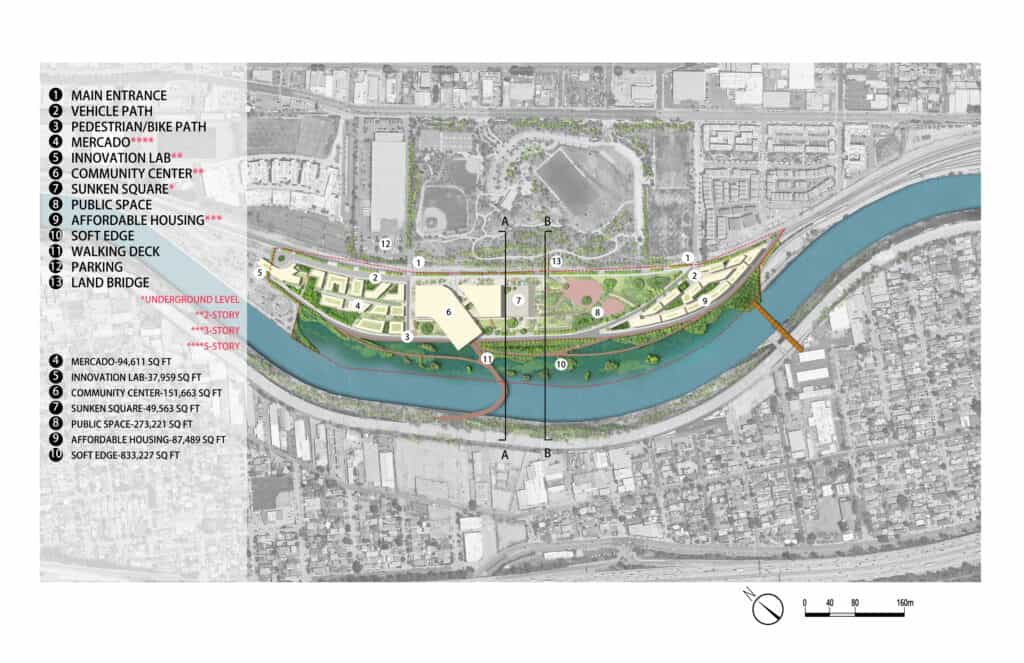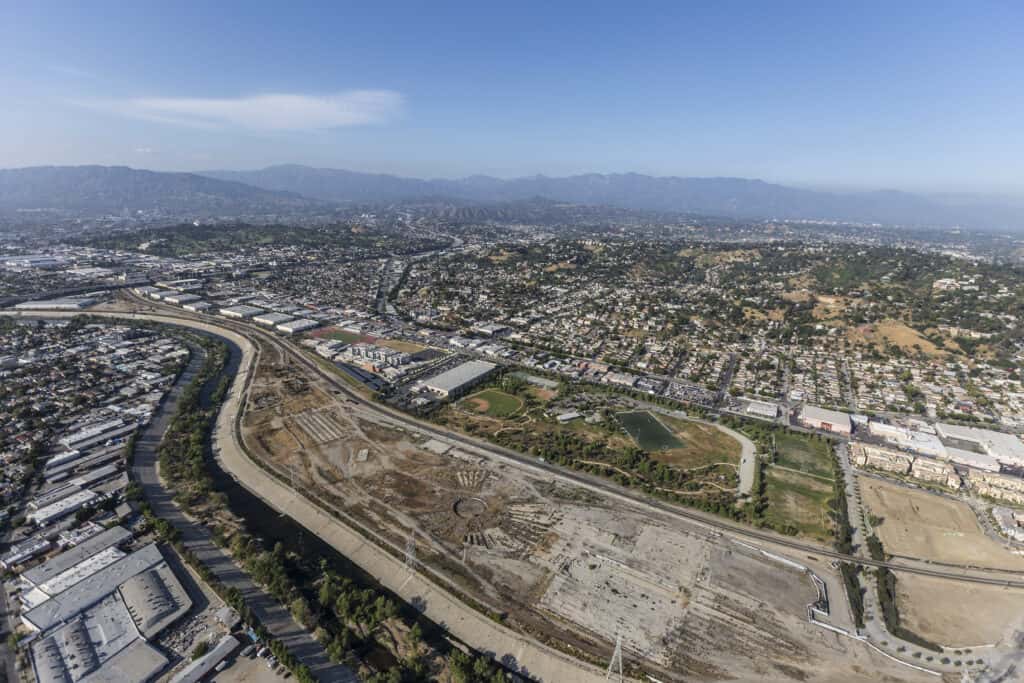Students’ capstone projects focus on transforming a downtown property to meet community needs
Along the Los Angeles River lies a 42-acre brownfield site, a former rail yard bounded by three major freeways, a busy thoroughfare and a Metrolink rail line.

Most would consider this wedge of downtown property called the Taylor Yard G2 parcel an eyesore. But not the students in USC Price Professor Deepak Bahl’s Master’s in Urban Planning capstone class.
Tasked with reimagining the site as a possible location for a mixed-use urban renewal development project, student teams got to work during the spring semester, putting their best ideas to paper and detailing just how they’d go about transforming the site for multi-use development.

(Photo: Emily Varley)
“The Taylor Yard G2 site was selected to give students a real-world experience of planning issues and problems they will face as they begin their careers,” said Bahl. “The site provided an opportunity for students to exercise their imagination and creativity, especially for a complex and challenging site.” And the site’s challenges were many. Its more industrial location meant little access to goods and services for potential residents. Set in a very low socio-economic area, the parcel was also heavily environmentally impacted by its freeway-adjacent location. Direct infrastructure connectivity to the river itself was non-existent.

(Photo: Alexander Sarno)
“With the rail line, environmental hazards and generally unsafe non-vehicular transit options available, it was really tough imagining the logistics of how the site could be transformed for the larger community,” said student Emily Varley. Still, the student teams came up with a number of creative scenarios, trying their best to formulate realistic and real-world-tested approaches for their proposed developments. Many plans also integrated concepts of environmental justice, housing accessibility, food security, and access to commerce and jobs.
“One of our overarching goals was to develop solutions that were synergistic and specific to the needs of the community,” said student Alexander Sarno. His group named their mixed-use project “The Encuentro,” a Spanish word meaning “an act of coming together” and meant to celebrate the predominantly Latino population of the area. The Encuentro development plan called for 450 multi-family housing units, a commercial center with grocery store and farmers market, a recreational center, as well as an innovation lab for job training and entrepreneurship. Public access and mobility improvements included street renovations, pedestrian paths, dedicated bus and protected bicycle lanes, as well as bicycle share stations.

In reality, the Taylor Yard G2 parcel is currently being developed by the City of Los Angeles as an open space and park. But imagining what it could be was an exercise that students embraced.
“A lot of times in our program, we discuss theories of urban planning and community connection,” said Varley. “With this project, we were challenged to go a step farther and try to deeply understand the community and its many wants and needs, then integrate a range of ideas from different stakeholders. It was challenging, but a real-world lesson that will serve me well in my career.”
